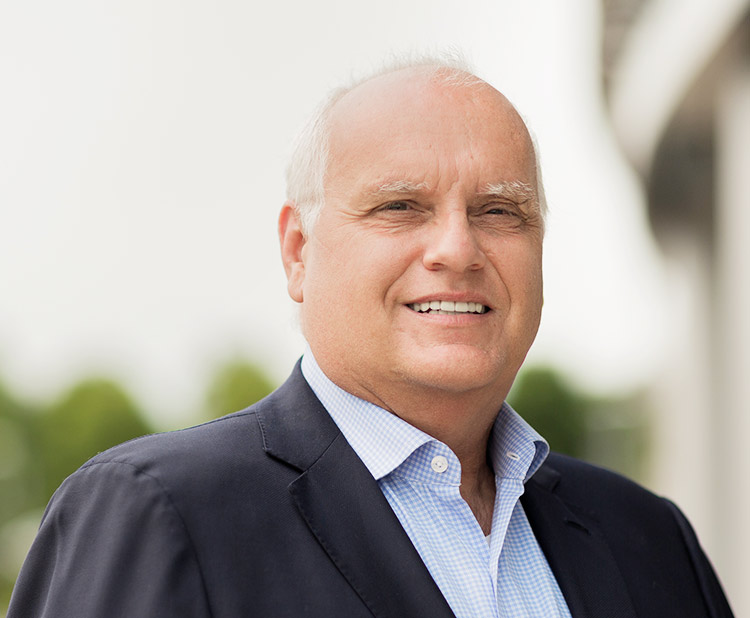Changing How Physicians Treat Cancer with Len Reyno, CMO
It is common to measure drug development’s success or failure according to readouts and regulatory decisions. But taking a drug from discovery to approval and ultimately to patients only gives you the beginning of the story. A truly successful drug is one that changes how physicians practice medicine.
Few understand this better than Len Reyno, M.D., our chief medical officer. Prior to entering industry twenty years ago, Len practiced as an academic medical oncologist for ten years, treating hundreds of patients and serving as principal investigator on numerous early and late-stage clinical trials. This wealth of patient care experience gave him tremendous insight into clinical development. His first biopharma job with Aventis (now Sanofi) saw Len lead the FDA filing for Taxotere® for the adjuvant treatment of breast cancer, an experience which crystallized for him the idea that the endpoint of clinical development is an update to clinical practice.
The link between drug development and clinical practice was solidified for Len during his tenure with Genentech, where he led the FDA filing team seeking approval of the adjuvant use of Herceptin® for HER2+ breast cancer. “When I was in clinical practice, patients with HER2+ breast cancer had a poor prognosis. Later when I worked on what we now call Herceptin, the clinical data made it clear that this drug would alter how breast cancer is treated, not just for HER2+ but influence how we approach other forms as well,” said Len. “That experience taught me how to integrate early science into clinical development so that we better understand the patient population we seek to benefit in the context of prior established therapies and where the opportunities lie to benefit patients with more effective therapies. What also became clear to me is that to be successful in Phase II studies, you must lay the groundwork in early clinical development. Every choice made in Phase I and early Phase II—whether it be patient selection, dose or schedule—ultimately impacts the chance of success in Phase III. As our understanding of target selection and the unique mechanism of action of our drugs increases, so must our attention to how these data map to clinical development.”
Immediately prior to joining C4T, Len spent more than a decade evaluating antibody drug conjugates (ADCs) and novel immunotherapies in early development, leading groups at Agensys and Pionyr Immunotherapeutics. Padcev®, now approved, is an ADC that is reshaping care in metastatic bladder cancer as a result of Len’s focus on mapping data to early clinical development.
“The path to successful drug development is not a straight line,” Len shared. “Our team working on the early development of Padcev had to navigate patient selection as well as refinements in dose and schedule to ensure we kept patient safety at the forefront. We did all this at a time when checkpoint inhibitors were also reshaping bladder cancer care. By working with both industry partners and committed academic investigators, we mapped a path to approval.”
Len is excited to bring this same early development rigor to C4T in the evaluation of the TPD drugs in our clinical pipeline. With C4T’s lead clinical assets, Len sees the opportunity to bring forward new medicines that change how diseases like colorectal cancer and multiple myeloma are treated. “To me, that’s what our work at C4T is about. We create elegant and powerful molecules, focus on how to conduct clinical trials to quickly identify a clinically relevant dose, and do our best to match these degrader medicines to the right patient population—all with the goal of ensuring the success of these drugs in later development, and ultimately informing and updating clinical practice guidelines,” he said. “Our targeted protein degradation approach presents us with opportunities to partner with oncologists looking for compelling new drugs with the potential to overcome the shortfalls of other approaches and provide better treatment outcomes to as many patients as possible.”
